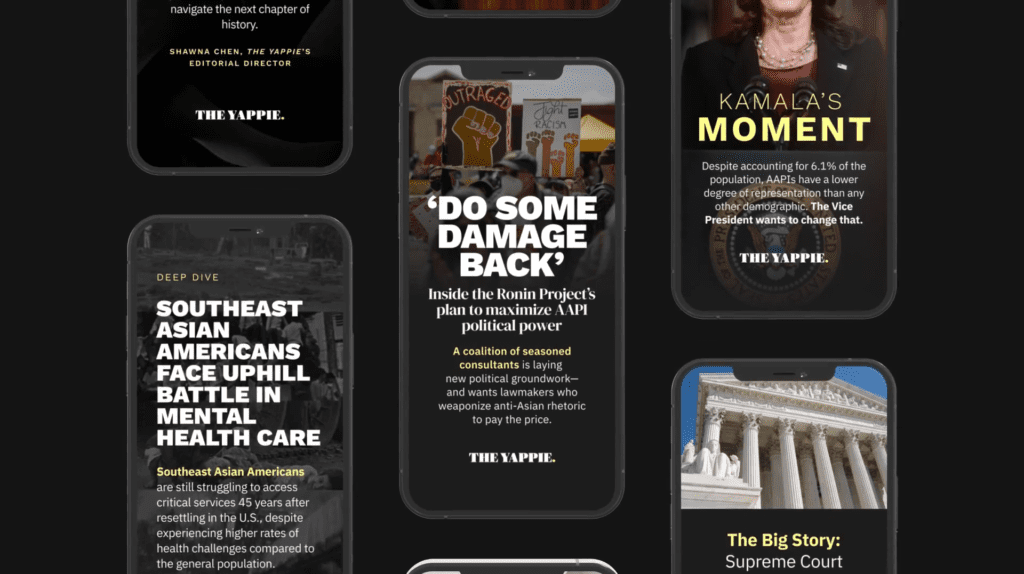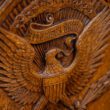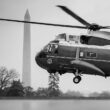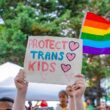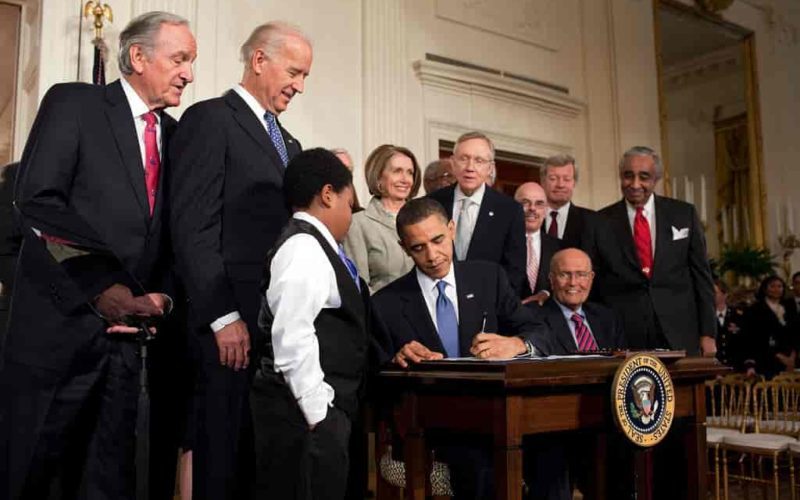The uninsured rate among Asian Americans and Pacific Islanders (AAPIs) fell sharply from 14.7% in 2013 to 6.8% in 2019 following implementation of the Affordable Care Act (ACA)—amounting to the largest relative decrease among any racial or ethnic group—according to a new report released Monday by the U.S. Department of Health and Human Services.
- The analysis, published by HHS’s research arm, the Office of the Assistant Secretary for Planning and Evaluation (ASPE), shows the healthcare law heavily benefited AAPI populations after its passage during the Obama administration more than a decade ago.
- The details: Relative gains in health insurance coverage among AAPIs outpaced those of all other racial groups and nearly eliminated the coverage disparity between AAPIs and non-Hispanic whites after 2014, the report states. Prior to the ACA, AAPIs experienced a 14.7% uninsured rate compared to 10.2% for non-Hispanic whites.
- While uninsured rates appear to have fallen among all AAPI subgroups, they still vary greatly. For example, Native Hawaiians and Pacific Islanders had the highest rate at 12.3% in 2019. Korean (10%) and Vietnamese Americans (8.3%) were also more likely to be uninsured compared to Japanese (2.8%), Indian (5.2%), Filipino (5.5%), and Chinese Americans (6%).
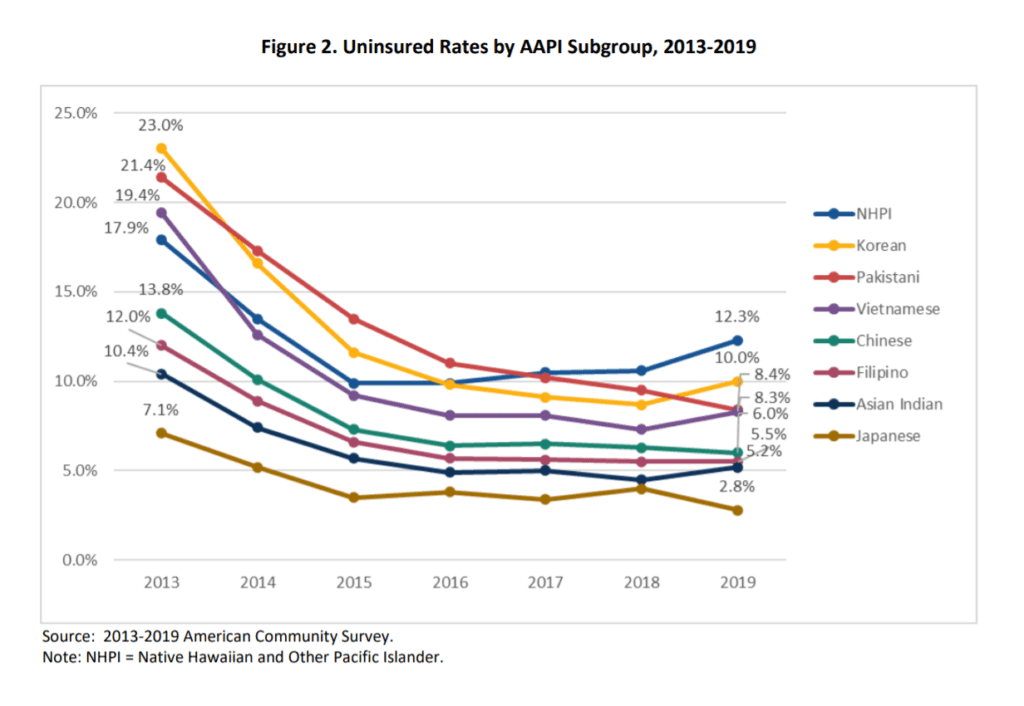

- But the numbers represent a significant improvement compared to pre-ACA data from 2010, which showed that all AAPI subgroups excluding Japanese Americans had uninsured rates of at least 10%. In 2013, Korean Americans had the highest rate at 23%—more than double its 2019 percentage.
- “Differences among AAPI subgroups can be explained at least in part by variation in employment, employer size, and income,” according to ASPE. “For example, Korean and Vietnamese Americans are more likely to be self-employed” compared to other AAPI populations.
- Why this matters: The HHS report comes as the Biden administration continues to tout its $1.9 trillion American Rescue Plan, which the president signed into law earlier this year. The agency suggests that many of the law’s provisions, such as the expansion of eligibility for premium tax credits, could help hundreds of thousands of AAPI consumers afford health coverage.
- An estimated 156,000 uninsured AAPIs “now have access to zerodollar premium health plans on HealthCare.gov and 197,000 uninsured AAPIs have become newly eligible for premium savings,” HHS said Monday.
- AAPIs were enrolled in health plans via HealthCare.gov at rates much higher than their share of the U.S. population in 2019. They also made up a significant portion of enrollees in states that have their own platforms for buying healthcare coverage—known as “Marketplaces”—likely in part due to outreach efforts by AAPI nonprofits and insurance agents who offered assistance in Asian languages.
- “Together the 39 states using the HealthCare.gov platform in 2019 plus California, New York, and Washington State comprised 92% of the total U.S. AAPI population,” the report says. “In these 42 states, an estimated 13% of Marketplace enrollees who provided information on race reported that they were AAPI, more than double the AAPI share of the population (6%) in those states.”
Though the report is promising, it does not break down data for every subgroup—such as Native Hawaiians and Pacific Islanders—due to its reliance on American Community Survey data from the U.S. Census Bureau. Demands for disaggregated health data have grown more urgent since the start of the coronavirus pandemic, a step both advocates and researchers agree is necessary to achieve true health equity and understand disparities experienced by diverse AAPI populations.
The COVID-19 infection and death rates among Native Hawaiians and Pacific Islanders are the highest of any racial and ethnic group in roughly a dozen states that report disaggregated data, according to Vox’s Rachel Ramirez.
Filipino Americans have also been disproportionately affected by the pandemic. They make up 4% of total nurses in the U.S., but almost a third of nurse deaths from the coronavirus.




